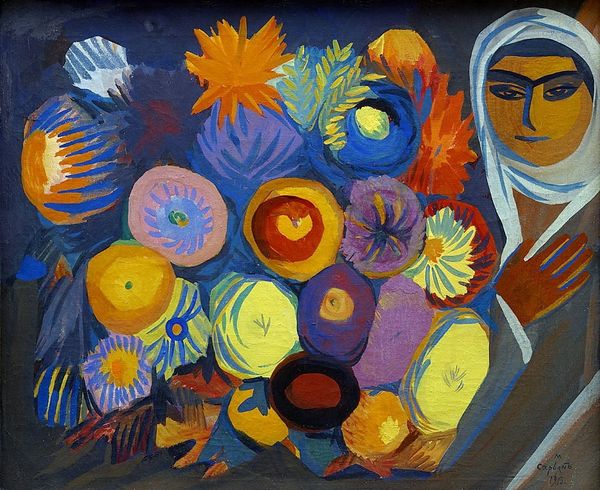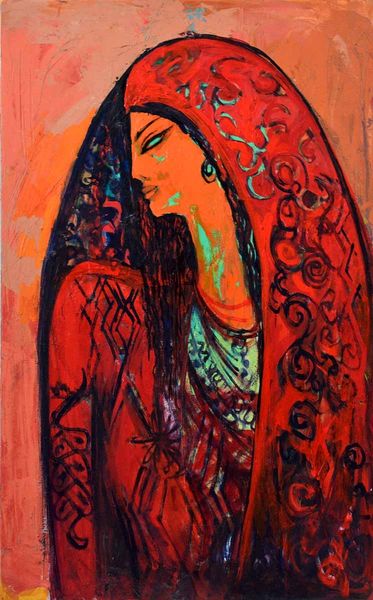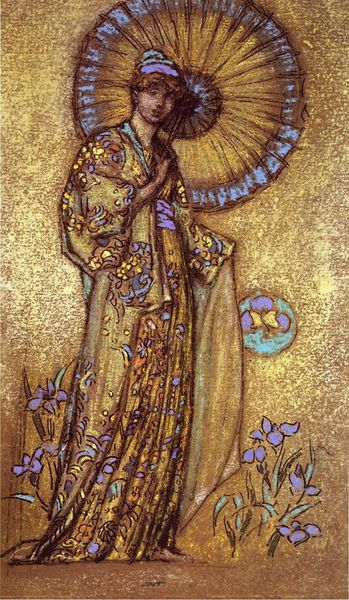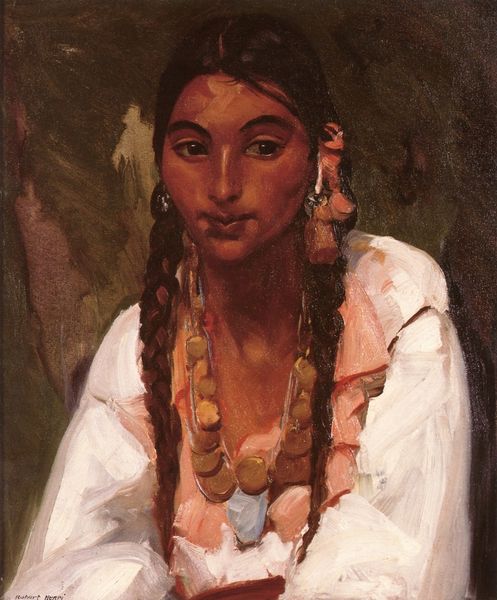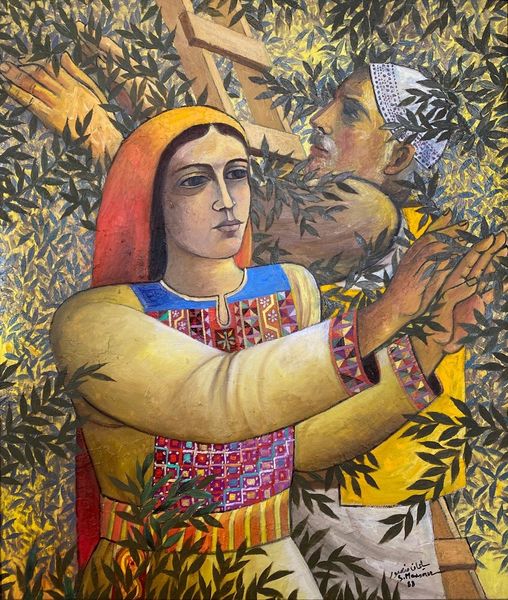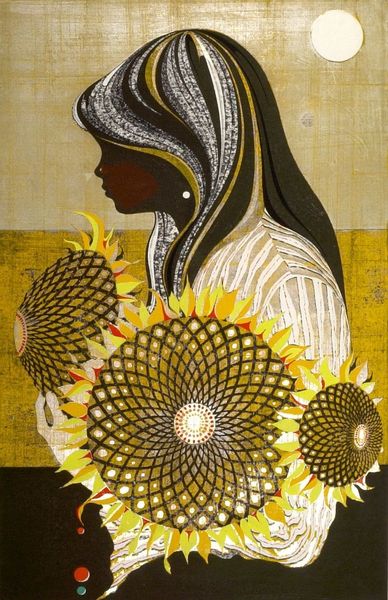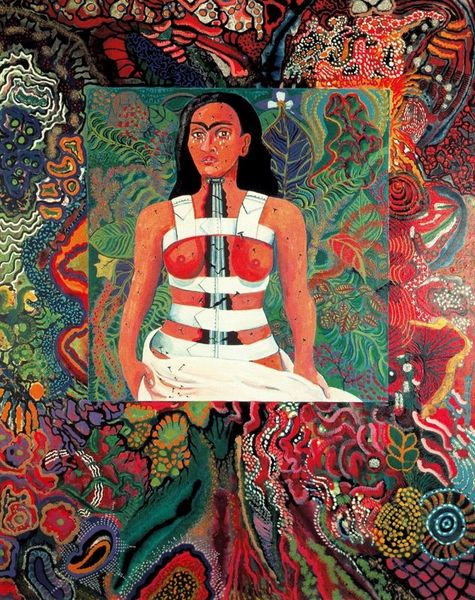
oil-paint
#
portrait
#
oil-paint
#
oil painting
#
folk-art
#
naive art
Copyright: Radi Nedelchev,Fair Use
Curator: Radi Nedelchev painted this “Woman’s Head” in 1968, using oil paints. Editor: My goodness, she's rather otherworldly, isn't she? Those eyes... it's like looking into a folk tale. Curator: There's certainly a stylized innocence, a nod toward naïve art perhaps? What draws your eye specifically? Editor: The composition—that elongated headdress framed by those circular shapes… It feels deliberately symbolic. The repeated circles feel to me like representing continuity, wholeness. She is completely present in her attire, and yet absent somehow. What's the structure conveying to you? Curator: The dark background certainly intensifies her gaze, making it impossible to look away. But what do you think of the flattened perspective and almost deliberate lack of detail in areas, contrasting with the more defined ornamentation? Is it a technique designed to pull forward folk art, to elevate it to a fine art setting? Editor: Precisely. Nedelchev is using flattening not just as technique, but as a kind of semiotic code. It pushes us to acknowledge the surface, to contemplate the symbols of identity rather than searching for individual depth in a lifelike rendering. It suggests tradition viewed through memory. The past seems both real and remote. Curator: So in a sense, she exists as more of a representation of a collective identity than as a single individual. The artist manages to get something ancient into oil on canvas. Editor: Precisely. The very deliberate compositional construction draws you in slowly. The symbolism of her garments, which I first interpreted as rather superficial adornments, now feels to have roots far beneath the soil and up into the cosmos! Curator: Well said! She continues to shift and alter depending on my mood, an attribute only seen within skillful artwork. Editor: Agreed. This isn’t just a picture; it is a vessel.
Comments
No comments
Be the first to comment and join the conversation on the ultimate creative platform.



